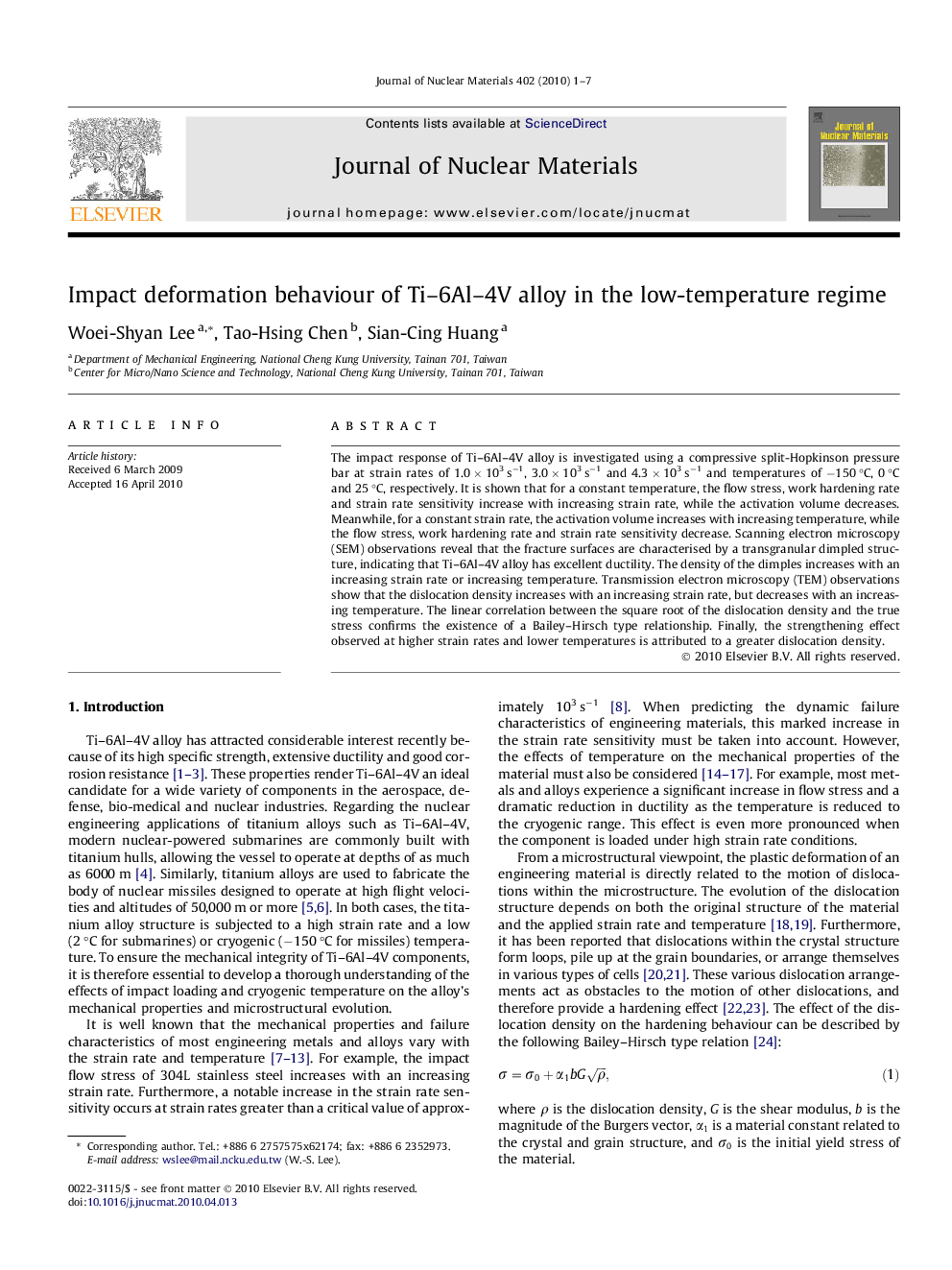| Article ID | Journal | Published Year | Pages | File Type |
|---|---|---|---|---|
| 1567157 | Journal of Nuclear Materials | 2010 | 7 Pages |
The impact response of Ti–6Al–4V alloy is investigated using a compressive split-Hopkinson pressure bar at strain rates of 1.0 × 103 s−1, 3.0 × 103 s−1 and 4.3 × 103 s−1 and temperatures of −150 °C, 0 °C and 25 °C, respectively. It is shown that for a constant temperature, the flow stress, work hardening rate and strain rate sensitivity increase with increasing strain rate, while the activation volume decreases. Meanwhile, for a constant strain rate, the activation volume increases with increasing temperature, while the flow stress, work hardening rate and strain rate sensitivity decrease. Scanning electron microscopy (SEM) observations reveal that the fracture surfaces are characterised by a transgranular dimpled structure, indicating that Ti–6Al–4V alloy has excellent ductility. The density of the dimples increases with an increasing strain rate or increasing temperature. Transmission electron microscopy (TEM) observations show that the dislocation density increases with an increasing strain rate, but decreases with an increasing temperature. The linear correlation between the square root of the dislocation density and the true stress confirms the existence of a Bailey–Hirsch type relationship. Finally, the strengthening effect observed at higher strain rates and lower temperatures is attributed to a greater dislocation density.
